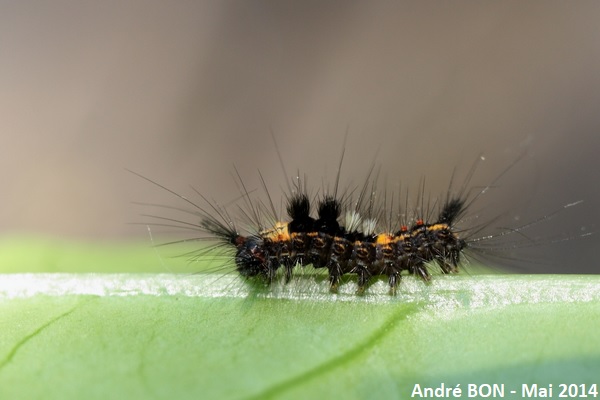
| Vapourer (Orgyia antiqua (Linnaeus, 1758)) |

|
|
Scientific name: Orgyia antiqua (Linnaeus, 1758) Common name: Vapourer Other names: Rusty Tussock Moth French name: Étoilée, Bombyx étoilé, Bombyx antique. Order: Lepidoptera Suborder: Heterocera Family: Erebidae Subfamily: Lymantriinae Wingspan: Males: 35-38mm. Females do not fly and show vestigial wings. Biotope: Forests, hedgerows, parks and gardens among other habitats. Geographic area: Europe, introduced to North America and to some places in Africa and Asia. Flight time: June-July then September-October. Number of generations : 2 Caterpillar: Dark grey to black with red warts on the lateral sides and on the back. There are four large tufts of hair on the top of the first four abdominal segments and other thinner brush-shaped tufts, two on the lateral sides at the front and one at the back. The dorsal tufts of adult caterpillars are yellow or brown. The bristles of this caterpillar are stinging. Host plant: Many trees, shrubs and low growing plants including Rosebushes, Hawthorns, Birches, etc. |
The Vapourer shows an important sexual dimorphism. Males have orange brown wings with a comma-shaped white lunule at the tornus of the fore wings. They bear large pectinate antennae. Females have only vestigial wings reduced to simple stumps. They show a rather big oval-shaped abdomen which is grey on the upper side and paler on the underside. As they cannot move very much they emit pheromones which are detected at distance by males using their antennae. Adults do not feed and so have a very short life. The Vapourer over winters at the egg state. |
| [To know more about the Vapourer] [Top] |

|
Here is one caterpillar at an intermediate development stage. The tufts of hairs do not show their final colour. |